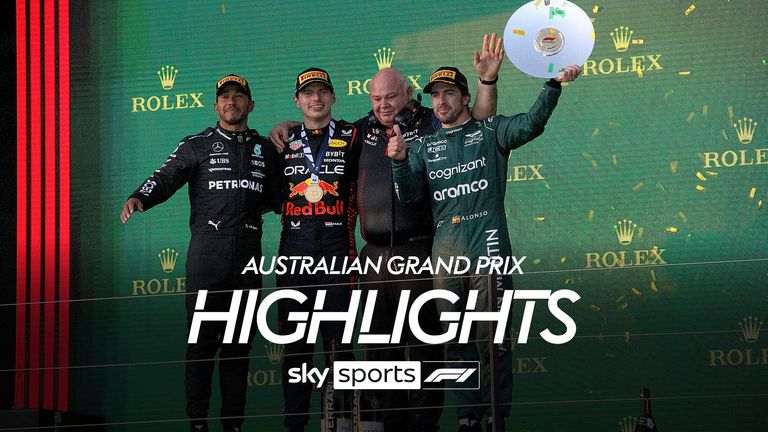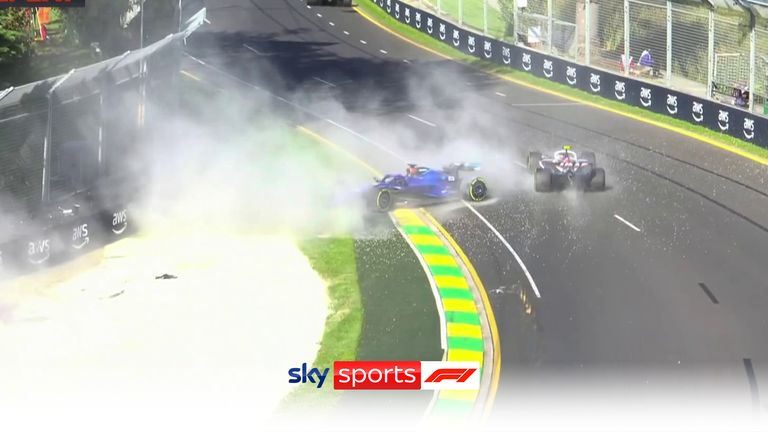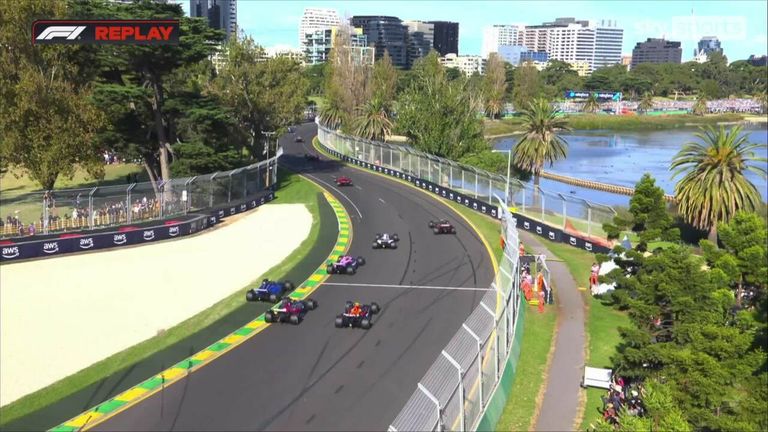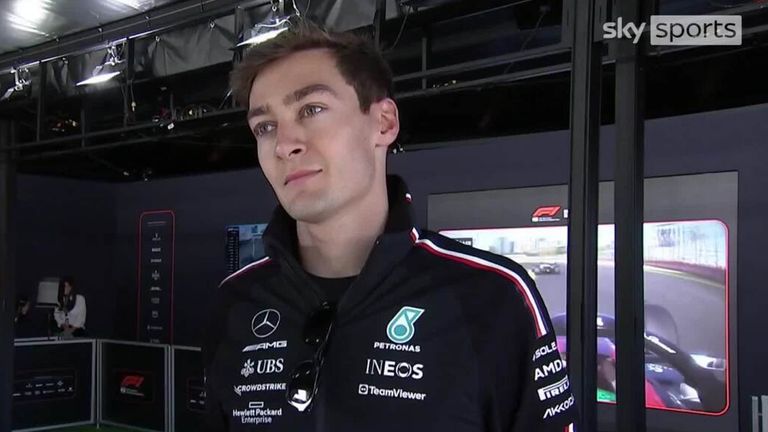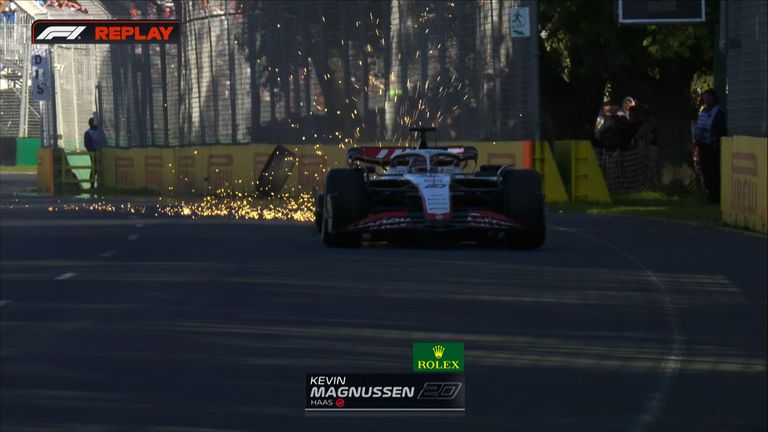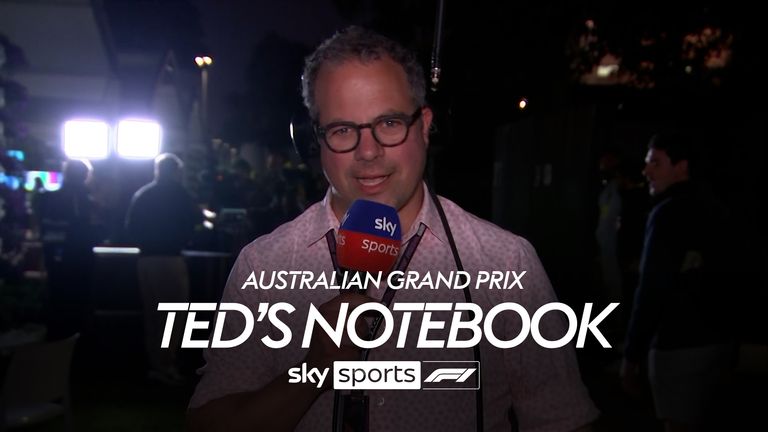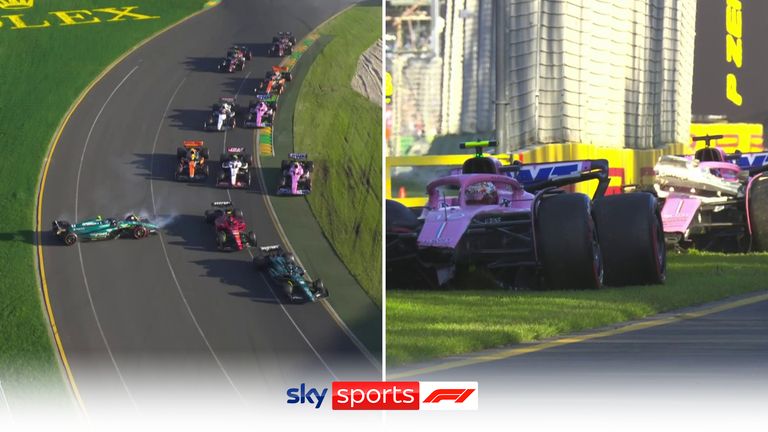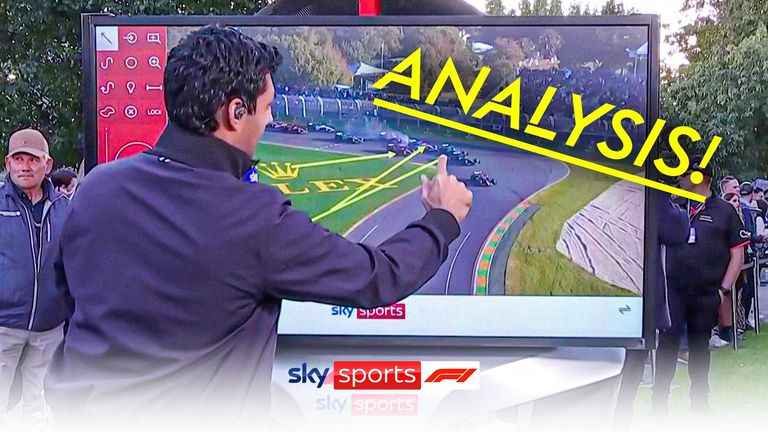[ad_1]
After a hugely dramatic Australian Grand Prix that featured three red flags, Formula 1’s officiators are once more coming under scrutiny for their application of the rules.
Each of Sunday’s three red flags in Melbourne was disputed, with the latter two in the closing stages creating a bizarre and frantic finish at Albert Park.
Despite holding on for victory, world championship leader Max Verstappen questioned the decisions after the race, with the Dutchman saying the race directors “created the problems themselves”.
Since the death of long-time race director Charlie Whiting in 2019, F1 have failed to find a lead referee trusted and respected by all teams, with previous incumbent Michael Masi sacked after his controversial overseeing of the 2021 Abu Dhabi finale that saw Verstappen beat Lewis Hamilton to the world championship.
This latest episode of confusion and discontent at the Australian Grand Prix will only increase the pressure on current race director Niels Wittich, who is set to be in charge of all 23 races this season after sharing the role last year.
With the dust settling on what was still a thrilling Grand Prix, Sky Sports assesses whether the decisions taken were justifiable…
Red flag 1: Albon crashes into barrier
What happened?
With the race having already been interrupted by a Safety Car after Charles Leclerc was left beached in the gravel on the opening lap, the officials were called back into action again on lap six when Alexander Albon crashed.
The Williams driver lost control of his car and spun on the exit of Turn 7, becoming a passenger as he thudded into the barrier, before being left stranded on the edge of the track.
The clean-up operation began with a recovery vehicle coming on track and lifting the Williams off the ground, but as that was going on, a red flag was thrown with the presence of debris and gravel on track the reason for the decision.
How did it impact the race?
The big losers were George Russell and Carlos Sainz, who pitted from first and fourth respectively.
Their decisions to stop had been made under the Safety Car, with Mercedes and Ferrari not anticipating a red flag would follow. Both assumed, therefore, they were taking a cheap pit stop.
The top eight had all started on medium tyres, and the thinking was that the fresh hard compound tyres both drivers put on would give them a chance of going to the end of the race.
The red flag saw the race stopped, and gave new leader Lewis Hamilton, and Verstappen behind him, the chance to change their tyres and keep their position.
Russell dropped down to seventh, while Sainz would resume in 11th.
Was the right decision taken?
Russell was adamant the wrong call had been made.
“I’m pretty disappointed initially with the decision to red-flag the race – no words for that,” he said after later retiring from the race following a power unit failure.
“We had a similar situation in Saudi with the Safety Car coming out in unnecessary circumstances.
“I thought we made the right decision pitting under the Safety Car, I was surprised when I saw Lewis and Max stay out and I was pretty pleased when I saw that because it played right into our hands.
“Then, obviously, the red flag ruined things.”
On Sky Sports F1’s live broadcast, commentator David Croft explained the thinking of the race director, pointing out that the section of the track the debris and gravel had been pushed onto is high-speed, being taken by drivers at 140mph.
The FIA also felt more time in the race would have been lost during a clean-up process behind the Safety Car.
“But you’re not (going at 140mph) under a Safety Car, so I don’t understand why there’s a red flag, I have to say,” Sky Sports F1’s Jenson Button said.
“Because you just slow down for the incident, the Safety Car can slow down, and they can sweep the gravel when the cars aren’t going past the incident.
“It’s damaged so many people’s races and it was a strategy call that a lot people made that they thought was right. It’s just strange, but I do understand safety-wise as well.”
Red flag 2: Magnussen hits wall and loses tyre
What happened?
With Verstappen cruising towards victory, Kevin Magnussen hit the wall with his Haas after losing control on the exit of Turn 2 on the 54th circuit of the 58-lap contest.
Once more, a Safety Car was initially sent out, and it was initially unclear whether the race would be able to resume.
Lewis Hamilton, perhaps aware of the situation, came on team radio to report that there was a significant amount of debris on track.
With both the debris and the possibility of the race finishing behind the Safety Car in mind, another red flag was thrown, setting up a theoretical two-lap sprint to the end from a standing start.
How did it impact the race?
There was one very clear loser on this occasion, the race leader Verstappen.
He held an eight-second lead over second-placed Hamilton at the time of Magnussen’s crash.
Under a Safety Car he would have either finished the race in front, or had the opportunity to control a rolling restart – on tyres that he was likely to have kept in better shape than the less speedy cars behind him.
The Dutchman had shown vulnerability at each of the previous standing starts, and therefore Hamilton suddenly had a realistic chance of victory, particularly given the fact Red Bull’s class-leading DRS system wouldn’t have been available for use with just two laps remaining.
As it was, Verstappen just about held Hamilton at bay off the line, and the great rivals got away cleanly, with the big losers turning out to be those who made contact behind them, which we’ll come to later.
Was the right decision taken?
Several drivers came onto team radio expressing surprise at the decision, with Verstappen, understandably, very vocal.
He said after the race: “I think it’s quite clear – I just didn’t understand why we needed a red flag.
“I think if you would have had a Safety Car and a normal rolling start, you wouldn’t have had all these shunts and then you have a normal finish.
“So, they [the race directors] created the problems themselves at the end of the day.”
From an entertainment perspective, there was no doubt it was a good decision.
“I’m not going to disagree with this red flag,” Sky Sports F1’s David Croft said. “This is going to give everybody two laps of cracking action to decide the winner of this race.”
Button added: “It’s entertainment, and we’re going to have an amazing show for those two laps.”
“The only person that’s really feeling the pain right now is Max Verstappen.
“I understand why the drivers have reacted in that (negative) way though, because we’ve never seen red flags for this before.”
Despite ultimately benefitting from the red flag as he finished sixth, Lando Norris explained why he was against it.
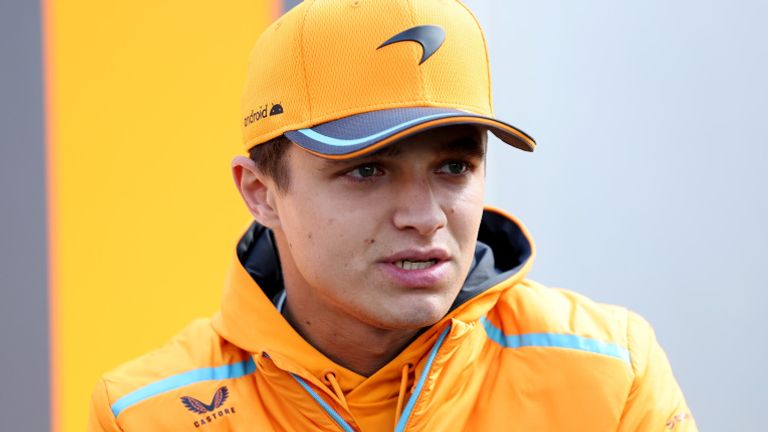
Lando Norris criticised the second red flag
The McLaren driver said: “I kind of hate it. I don’t like the restarts. I guess, maybe in the first quarter of the race, I understand it.
“(In) the second half, and especially with four laps to go, I feel like you ruin a lot of things. And I don’t feel like it’s fair for a lot of people who have done a good job and they get taken out.
“We come all the way to Australia, but it’s so much hard work to drive 56, 55 laps perfectly. And, because they try and put on a show, you just get unlucky, and everything can get taken away from you all of a sudden. So I just think that side of it, I just think it needs a small rethink.”
Red flag 3: Heavy Alpine collision among multiple incidents at restart
What happened?
With all eyes on Verstappen and Hamilton, the drama came behind them, as fourth-placed Carlos Sainz made contact with Fernando Alonso in front of him, causing them both to spin.
Alpine’s Pierre Gasly ran wide and off track, along with Red Bull’s Sergio Perez, and then as the Frenchman came back on track he unwittingly forced his team-mate Esteban Ocon out of room on the right of the track, leading to contact which sent them both into the barrier.
Further back, Williams’ Logan Sargeant ran into the back of AlphaTauri’s Nyck de Vries, putting both of them out of the race.
The total carnage, along with the heavy impact for both Alpines, saw the red flag come out again.
How did it impact the race?
With just one lap remaining, there was no prospect of more racing, but the FIA took a long time to decide what to do with the order before a processional Safety Car-led final lap.
Ultimately, it was decided that as the first sector of the lap hadn’t been completed before the red flag came out, the order from before the restart would be restored for the final lap, minus the retired cars.
Alonso and Sainz, who were able to carry on after their contact, were therefore reinstated to third and fourth, but the Ferrari driver was then given a five-second penalty before the final lap for causing the collision.
That saw him drop to last of the 12 cars that finished the race as the drivers behind him stayed within the five-second margin through the final corner after the Safety Car had returned to the pit lane.
Lance Stroll, who had been sixth at the restart before running wide, jumped to fourth, while almost all of those who finished behind him in point-scoring positions also benefitted, including McLaren rookie Oscar Piastri, who claimed his first points in Formula 1 by finishing eighth at his home race.
The one driver to significantly suffer from the decision was Haas’ Nico Hulkenberg, who had risen to fourth before the red flag was waved, but was returned to seventh when the order was reset.
Was the right decision taken?
There was little dispute over the final red flag, with the heavy impact the Alpines experienced and the need to check on their safety – along with all the resulting debris and chaos – a valid reason for the stoppage.
Alonso, who initially thought he had lost out on a third podium in as many races this season, berated the second red flag, that had led to the third and final standing start, over team radio.
“Stupid rule,” the Spaniard fumed. “How the hell you can put a red flag before?”

After finishing third at the Australian GP, Fernando Alonso admits he was confused as to what exactly was happening after a red flag caused pandemonium at the end of the race.
Attention instead turned to the decision over restoring the pre-restart order, which was only officially questioned by Haas, who appealed the decision, with team principal Guenther Steiner apparently aggrieved at Hulkenberg’s demotion.
The consensus was that the right decision had been taken, although the FIA had yet to confirm the status of Haas’ appeal several hours after the race’s completion.
Then there was Sainz, who felt his five-second penalty had become far more harsh than it should be, costing him eight places.
“It is the biggest disgrace I’ve seen in the sport for many years,” Sainz said.
“It is the most unfair penalty I have seen in my life.”
With four weeks until the season resumes in Azerbaijan at a Baku street circuit likely to create more Safety Car – and potential red flag – incidents, the FIA will undoubtedly come under pressure from teams to provide clarity on their rules and procedures.
[ad_2]
Source link
